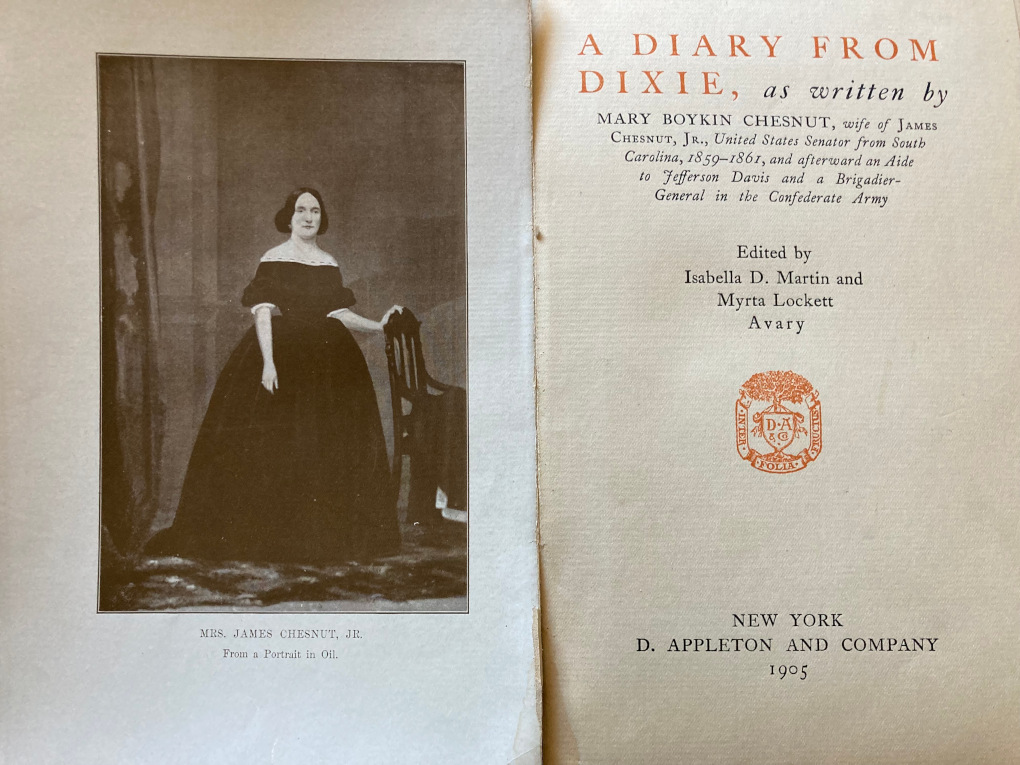 Eustis Estate
Eustis Estate
Diary from Dixie
David Chesnut I was born in Camden, South Carolina, where Mulberry Plantation was located. This plantation is famous for being the home of Mary Boykin Chesnut, author of A Diary From Dixie, one of the most well-known narratives about the experience of living through the Civil War. The parents of David Chesnut I were likely enslaved at Mulberry and the Chesnut family likely took their name from the family of James Chesnut. David Chesnut II always kept a copy of A Diary From Dixie in his home next to several other important family volumes, suggesting he was aware that his own family had been enslaved by James Chesnut’s family at one time. His son, David Chesnut III, corresponded with a genealogist and scholar in South Carolina in the 1970s about this connection as well.

Mary Boykin Miller was born into a powerful political family in the antebellum south. As the daughter of South Carolina’s governor she was highly educated and traveled in privileged circles, eventually marrying lawyer and politician James Chesnut Jr. James was a member of one of the wealthiest slaveholding families in the state and would go on to become a United States Senator, a Confederate general and an aide to Jefferson Davis during the Civil War. The couple made their home near Camden, South Carolina, on a large plantation called Mulberry where they entertained the local social and political elite. Mulberry was one of the largest and most profitable inland plantations in the area and enslaved up to 500 people by 1849.
Mary Chesnut was known to be well-read and witty and was popular in southern high society. In 1859, as Civil War loomed over the southern states, Mary began keeping a diary and recording her days as a member of the Confederacy’s inner circle while historical events unfolded around her. As the wife of a high-ranking military official she had a unique perspective on the events of the war and she added her own thoughts on secession, enslavement and society as she watched the Confederate government taking shape. The Chesnuts survived the war, although they witnessed several major southern conflicts including the attack on Fort Sumter in April of 1861. After the war Mary worked to revise her diary into a book which was first published in 1905 (nineteen years after her death) as A Diary From Dixie.